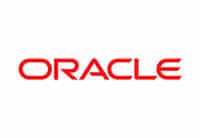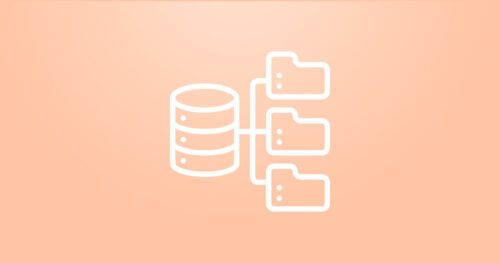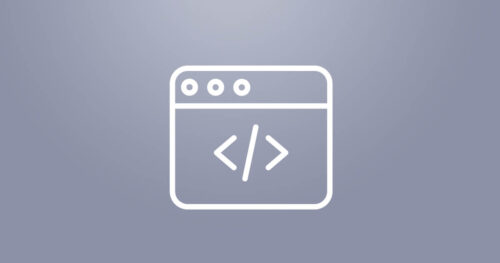This extensive course empowers the developers with declarative features of the ADF Business Components that allow developers to develop and crate the business services. These business services are reusable and can be later exposed in the UI by using the client components of ADF. The course explains every ADF Faces component that allows to apply skins and extends internationalization support along with accessibility. The Faces components also facilitate the complete customization and provides affluent components for visualization, having the capabilities of rendering gauges, graphs, charts and much more graphics for real time updates.
-
This course will provide you with the skills you need to successfully implement WebCenter Sites. You will learn how to perform the developer responsibilities for using the WebCenter Sites content management features and related rendering frameworks for building websites.By attending this course, you will have the opportunity to create effective user interfaces for content contributions, manage users, roles and access permissions for a content management site, and develop and implement a rendering model with the appropriate caching strategy. You will learn how to improve your company’s web presence with the new features of Oracle WebCenter 12c, such as A / B testing and visitor services.
-
This Oracle BPM 12c: Advanced Implementation Ed 1 preparing shows you how to make increasingly complex procedure models to meet your business needs through utilizing various sorts of occasions, including message, sign and clock occasions. Master Oracle University educators will show you how to oversee synchronous and non concurrent correspondence among procedures and sub forms, peer forms and different administrations.
-
Oracle Data Integrator is an extensive data integration platform that handles all information integration requirements from high-intensity, high-performance batch loads, to event-driven integration processes and SOA-enabled data services.
Oracle Data Integrator’s Extract, Load, Transform (E-LT) architecture leverages disparate RDBMS engines to process and transform the data – the approach that optimizes performance, scalability and lowers overall solution costs.
Expert Oracle University instructors will teach you how to use Oracle Data Integrator (ODI) 12c to implement high-performance movement and transformation of data among various platforms. This course covers using ODI graphical user interfaces that enable users to access different ODI components and resources that form ODI infrastructure.
-
This in-depth training explains working with BA (Business Architecture) projects. The course demonstrates designing the forms, data definitions and rules.
The course includes delivering the training of modeling, implementing, playing and deploying the business processes, creating BPM Studio or Business Process Composer, measuring process-specific and standard both types of business indicators using BAM, and throwing up warnings in conditions that are abnormal.
-
The Transition to Oracle Solaris 11 training and certification course will give you a detailed overview of the transition to Oracle Solaris 11 training builds on your system administration experience with Oracle Solaris 10.
-
This course is targeted at Developers and Database Administrators and begins with the concepts of a relational database and the SQL programming language. It includes writing queries against single and multiple tables, manipulate data in tables, and create database objects.
You’ll also learn how to create sequences, synonyms, indexes, and views, manage schema objects, and manage data using subqueries. Additionally, the course covers controlling User Access and managing data in different time zones.
-
This OAM-12c-AE: Oracle Access Management 12c: Administration Essentials training teaches you how to install, configure and implement a real life deployment of Oracle Access Manager 12c PS3 (12.2.1.3). Work with expert Oracle University instructors to install, troubleshoot, diagnose and more.
Learn To:
- Install and configure Oracle Access Manager 12c PS3.
- Configure servers, data sources and agents.
- Set up policy configuration (shared components and application domain).
- Manage sign-on, sign-off and sessions. Configure detached credential collector [DCC] Set up auditing, logging and troubleshooting for OAM 12c PS3.
- Manage sessions, policy and agents with the REST API.
-
This Architect Enterprise Applications with Java EE training teaches you to develop architectures for enterprise Java applications using the Java Platform, Enterprise Edition (Java EE) technology. Understand Java EE and relevant technologies.
This Architect Enterprise Applications with Java EE training teaches you how to develop robust architectures for enterprise Java applications. Learn how to use Java Platform, Enterprise Edition (Java EE) technology.
Learn How To:
- Define the Enterprise Architect’s roles, responsibilities and deliverables.
- Identify non-functional requirements (NFRs) and describe common problems and solutions.
- Translate business requirements into an architecture.
- Weigh choices in architecting the client, web, business, integration and data tiers.
- Apply various evaluation criteria to choosing architectural elements and patterns, tools, servers and frameworks.
Benefits to You
By enrolling in this course, you’ll understand how Enterprise Java applications developed using the architecture as a guideline can accommodate rapid change and growth. Expert Oracle University instructors will help you explore the technical context of the Java EE and relevant technologies.
Strategies to Create Application Blueprints
You’ll also learn the strategies needed to create application blueprints that work well when implementing Java EE technologies. These strategies include effective decision-making through the use of non-functional qualities (such as scalability and flexibility), Java EE technology blueprints and design patterns.
-
The Java EE 7: Back-End Server Application Development training teaches you how to build and deploy enterprise applications that comply with Java Platform, Enterprise Edition 7 Full Profile. Learn to develop applications with the following technologies: Enterprise JavaBeans (EJB), Java Persistence API (JPA), JDBC, Java Transaction API (JTA), Contexts and Dependency Injection (CDI), Java Message Service (JMS), Bean Validation, Batch API, Timer services, Java EE Concurrency and more.
Learn To:
- Use Java EE 7 technologies to create, read, update and delete database records using both JDBC and JPA technologies.
- Create a flexible component model using EJB and CDI technology.
- Create SOAP-based and XML web services.
- Develop the business and integration tiers of an enterprise application.
- Understand how those components responsible for: interacting with other systems through web services and message queues.
- Become proficient with database access and manipulation using transactions.
- Provide timer, concurrency and batch services.
- Develop expertise using Java Enterprise Edition 7, the latest version of the Java platform for development of enterprise applications.
Benefits to You
When you walk away from this course, you will have developed the knowledge and skills to read and write messages to systems that may or may not be developed using Java with Java Message Service create batch services to process thousands of jobs in parallel. This interactive, hands-on training is an excellent follow-up course to the Java EE 7: Front-end Application Development training.
-
The Java EE 7: Front-end Web Application Development training teaches you how to build and deploy enterprise applications that comply with Java Platform, Enterprise Edition 7 Web Profile. The technologies presented in this course include annotations, Session Enterprise JavaBeans (EJB-Lite), Java Persistence API (JPA), servlets, JavaServer Pages(JSPs), Contexts and Dependency Injection (CDI), JAX-RS RESTful web services, the Java API for WebSocket and more.
This Java EE 7: Front-end Web Application Development training helps you explore building and deploying enterprise applications that comply with the Java Platform, Enterprise Edition 7 Web Profile. Expert Oracle University instructors will help you explore annotations, Session Enterprise JavaBeans (EJB-Lite), Java Persistence API (JPA), servlets, JavaServer Pages(JSPs), Contexts and Dependency Injection (CDI), JAX-RS RESTful web services, the Java API for WebSocket and the Java API for JSON processing.
Learn To:
- Develop web-based interfaces for both desktop and mobile devices.
- Assemble an application.
- Build Java applications.
- Deploy an application into an application server (Java EE platform runtime environment).
Benefits to You
By taking this course, you’ll gain hands-on experience building Java EE web applications. You will get the chance to create web-based user interfaces using HTML5 and JavaScript along with JSPs and servlets. Web-based user interfaces will use AJAX to communicate with RESTful web services you create; data will persist using JPA and optimistic locking.
Participate in Hands-On Labs
By learning through hands-on exercises via structured labs, you’ll get a chance to explore EJB-Lite session bean components, which can be used with container-managed transactions. You’ll perform lab exercises using the NetBeans IDE and WebLogic Server.
-
This entry-level course is aimed at programmers who are new to Java and who need to learn its concepts, language constructs, and data types. Included in the agenda are topics on exception handling, lambda expressions, and modular programming.
The course is designed for programmers who will apply these language skills to develop programs using the latest major versions of the JDK, currently Java 11. Students practice the skills learned in each lesson through hands-on labs.







